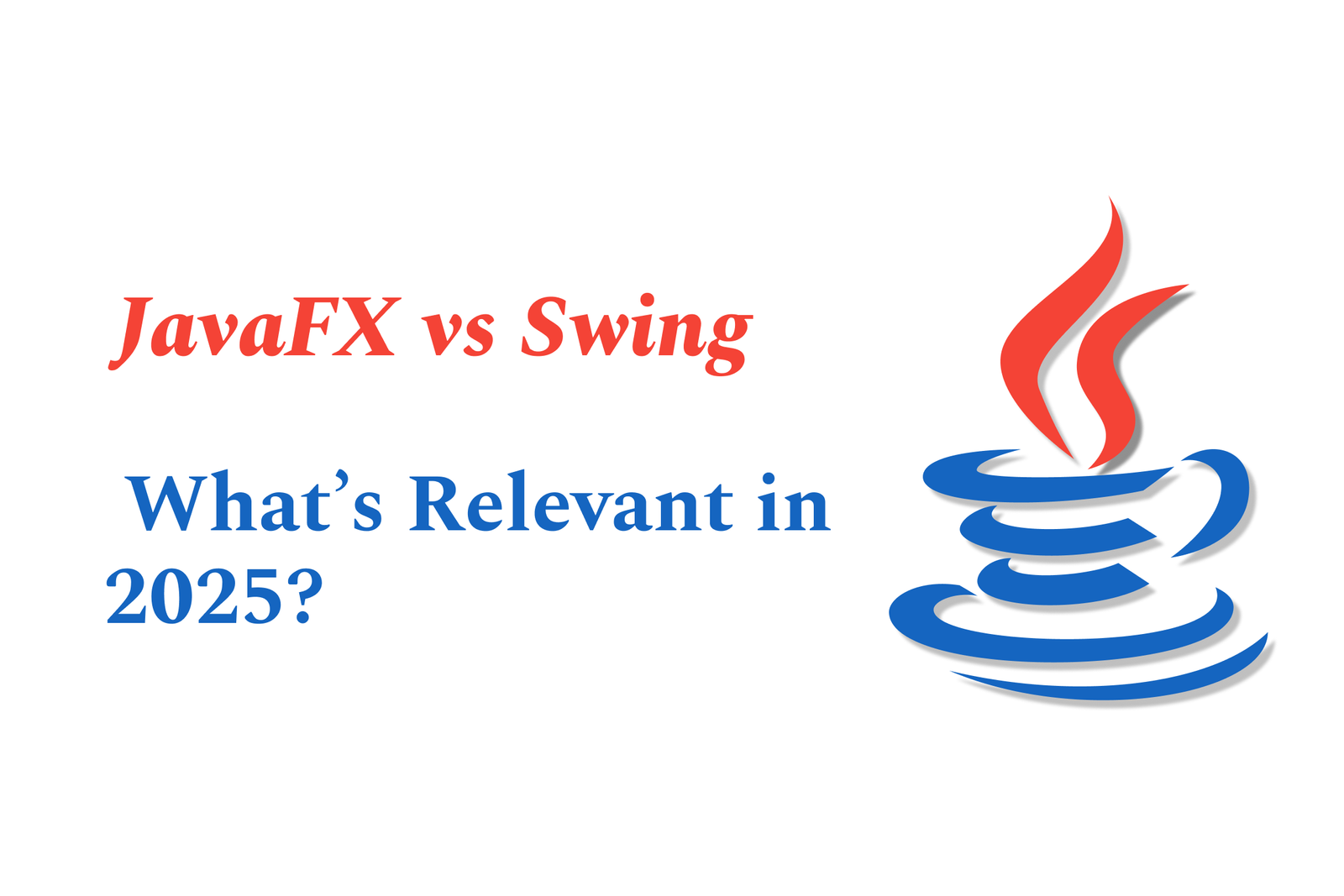JavaFX Vs Swing: What?S Relevant In 2025?
In 2025, JavaFX leads as the modern, feature-rich Java UI framework with advanced graphics, multimedia, and mobile support, while Swing remains relevant mainly for legacy app maintenance due to its stability but outdated features and limited evolution. JavaFX is preferred for new projects.
JavaFX vs Swing: What’s Relevant in 2025?
1 ) Overview of JavaFX and Swing
JavaFX was introduced as a modern replacement for Swing, offering advanced UI features.
Swing remains part of Java SE but has seen little development in recent years.
JavaFX provides richer controls, multimedia support, animations, and better graphics.
2 ) Reasons to Prefer JavaFX in 2025
Future Oriented: JavaFX is actively developed with new features like touch support, 3D graphics, embedded browsers, and more.
Better Visuals: JavaFX apps look more modern and visually appealing out of the box compared to Swing.
Mobile Prospects: Oracle is working on extending JavaFX to mobile platforms like Android and iOS.
Robust Architecture: JavaFX has a well designed architecture and rapidly evolving API, with strong feedback from developers.
Extra Features: Includes charts API, video/audio playback, and HTML5 browser integration.
3 ) Current State of Swing
Swing remains widely used, especially in legacy desktop applications.
It has a mature, stable API with extensive component libraries.
However, it lacks modern UI components and graphics capabilities inherent in JavaFX.
Swing’s development is mostly in maintenance mode with no major new features planned.
4 ) Integration Between JavaFX and Swing
Incremental migration strategy: JavaFX components can be integrated into existing Swing applications gradually using `JFXPanel`.
JavaFX runs on its own UI thread (JavaFX Application Thread), whereas Swing uses the Event Dispatch Thread (EDT), requiring careful thread management.
Oracle officially supports embedding JavaFX scenes into Swing but not vice versa.
Proper synchronization using `Platform.runLater` (JavaFX) and `SwingUtilities.invokeLater` (Swing) ensures thread safety.
5 ) When to Choose Swing
Existing legacy applications built in Swing with extensive use of its components.
Applications that need stability over new features.
Developers already familiar with Swing’s API and ecosystem.
6 ) When to Choose JavaFX
New projects targeting modern, rich user interfaces.
Applications requiring multimedia, animations, or modern visual design.
Projects anticipating mobile deployment or touch support.
Developers wanting active framework evolution and easier UI styling.
7 ) Conclusion: What’s Relevant in 2025?
JavaFX is the forward looking option for Java desktop applications with ongoing enhancements and broader platform potential.
Swing remains relevant mainly for maintaining legacy apps or when stability and maturity are priorities.
For new desktop Java UI development in 2025, learning and adopting JavaFX is advisable, while knowing Swing may still be useful for interoperability or legacy support.
https://justacademy.in/news-detail/java-and-reactive-streams:-what?s-next?
https://justacademy.in/news-detail/android-developer-preview-releases
https://justacademy.in/news-detail/java-23-pattern-matching-enhancements
https://justacademy.in/news-detail/android-data-privacy-changes-in-2025
https://justacademy.in/news-detail/java?s-role-in-big-data-analytics-today
Related Posts
In 2025, top Angular libraries offer modern, feature-rich components and tools for building dynamic web apps. From powerful data grids to low-code platforms like UI Bakery, these libraries enhance development speed, UI design, and scalability, making them essential for Angular developers.
Migrating from AngularJS to Angular 17 involves gradually upgrading your app by running both frameworks together using tools like ngUpgrade, rewriting components in TypeScript, and adopting Angular’s modern architecture to enhance performance, maintainability, and long-term support.
Angular state management tools help organize and handle app data efficiently, improving scalability and maintainability. Popular options include NgRx for robust, RxJS-based patterns, and newer Signal Store solutions that offer simpler, reactive approaches integrated tightly with Angular’s latest features.
RxJS in Angular empowers developers to manage asynchronous data streams with powerful operators like `forkJoin`, `combineLatest`, and `zip`. Mastering these key operators in 2025 is essential for building efficient, reactive applications that handle complex event sequences seamlessly.
Angular performance optimization in 2025 focuses on improving app speed and responsiveness by using techniques like OnPush change detection, lazy loading, efficient data caching, and AOT compilation. These practices reduce load times, enhance user experience, and ensure scalable, fast Angular applications.
In 2025, Angular remains preferred for large-scale, enterprise apps with its robust, all-in-one framework, while Vue attracts developers seeking simplicity and fast development for smaller projects. Both frameworks excel, with choice driven by project needs and team expertise.
Angular Signals are a new reactive primitive in Angular 16 that enable fine-grained, efficient change detection by automatically tracking dependencies and updating only affected parts of the UI. They simplify state management and boost app performance, revolutionizing Angular's reactivity model.
Angular interview questions to prepare in 2025 focus on core concepts like components, directives, data binding, routing, and dependency injection, along with TypeScript mastery and latest Angular features to ensure strong practical knowledge for building scalable, efficient web applications.
AngularJS reached its official end of support in January 2022, meaning no further updates or security patches. To ensure app security and performance, developers should consider migrating to modern Angular versions or seek third-party long-term support options if immediate migration isn’t possible.
The Angular Roadmap 2025 highlights upcoming features focused on improving developer experience and performance, including zoneless Angular, Signals integration, enhanced Forms, async data handling, improved HMR, and expanded Angular Material/CDK enhancements, driving modern, efficient web app development.










